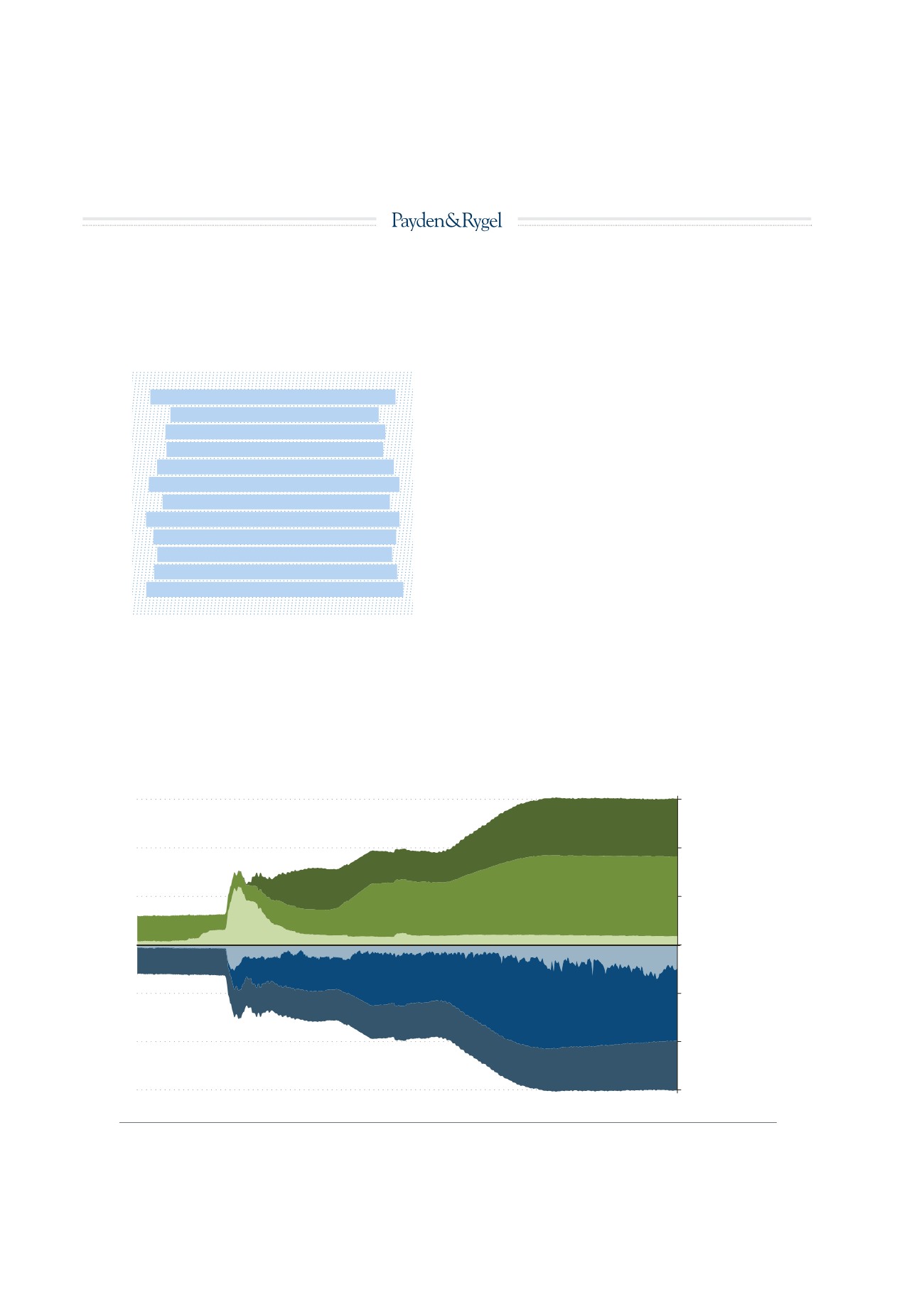

Press, Journal Article
2
Imagine the following situation: you overdraft your checking account
and the bank calls asking for more funds (and charges you a hefty
fee). Instead of running the overdraft, you call someone else who also
banks at your bank and ask them to lend you money to cover your
overdraft. If they agree, then the bank simply debits their account and
credits your account. No more overdraft.
The “phone a friend” equivalent in banking is an unsecured overnight
market where banks borrow and loan reserves. The rate of interest
banks charge each other is the famous “federal funds rate.” Before
2007, this “phone a friend” market was a small, yet important mar-
ket. Total reserve balances averaged just $11 billion (mostly to meet
reserve requirements, no excess savings). Excess reserves, those bal-
ance held above and beyond the call of regulations, averaged just $1.5
billion!
2
Since the market was so small, the Fed could manipulate the
federal funds rate by either making reserves more scarce (for higher
rates) or more plentiful (lower rates) relative to market demand.
POST-2008: MORE MONEY, MORE PROBLEMS
Under successive QE programs, the Fed increased the size of its bal-
ance sheet from $800 billion to more than $4.5 trillion (
see again Fig-
ure 2
). How did that happen? The Fed created $2.6 trillion in new
lia-
bilities
(reserves). Those reserves were exchanged with member banks
for great quantities of Treasury notes, Treasury bonds and agency-
backed MBS (the Fed’s assets).
As a result, today there is
anything
but a scarcity of reserves!
Of course, the surfeit of reserves created a new problem for the Fed:
how to control the “phone a friend” interest rate when so many re-
serves were available. Why “phone a friend” when your account is
flush with cash? Indeed, trading volumes are 75% lower in the“phone
a friend” market than pre-crisis daily volumes.
At first the central bank settled on a solution: pay banks interest on
excess reserves to, in the words of the New York Fed, “reduce the in-
centive for [banks] to lend at rates much below IOER (Interest on Ex-
cess Reserves) providing the Federal Reserve additional control” over
the fed funds rate. If banks receive 100 basis points (the IOER for
holding onto reserves), they will not likely lend them out to someone
else for any less, thereby enforcing the federal funds rate.
Source: Federal Reserve Board, WSJ
*Weekly End of Wednesday Levels
$0.0
$1.5
$3.0
$4.5
Agency/MBS
Treasuries
Other
USD Trillions
$1.5
$3.0
$4.5
'07
'08
'09
'10
'11
'12
'13
'14
'15
'16
'17
Currency in Circulation
Reserves
Other
ASSETS
LIABILITIES
THAT BIG FAT BALANCE SHEET
fig. 2
«BEFORE 2007, THIS “PHONE
A FRIEND” MARKET WAS
A SMALL, YET IMPORTANT
MARKET. TOTAL RESERVE
BALANCES AVERAGED JUST
$11 BILLION (MOSTLY TO MEET
RESERVE REQUIREMENTS,
NO EXCESS SAVINGS). EXCESS
RESERVES, THOSE BALANCE
HELD ABOVE AND BEYOND
THE CALL OF REGULATIONS,
AVERAGED JUST $1.5 BILLION!»
48
















